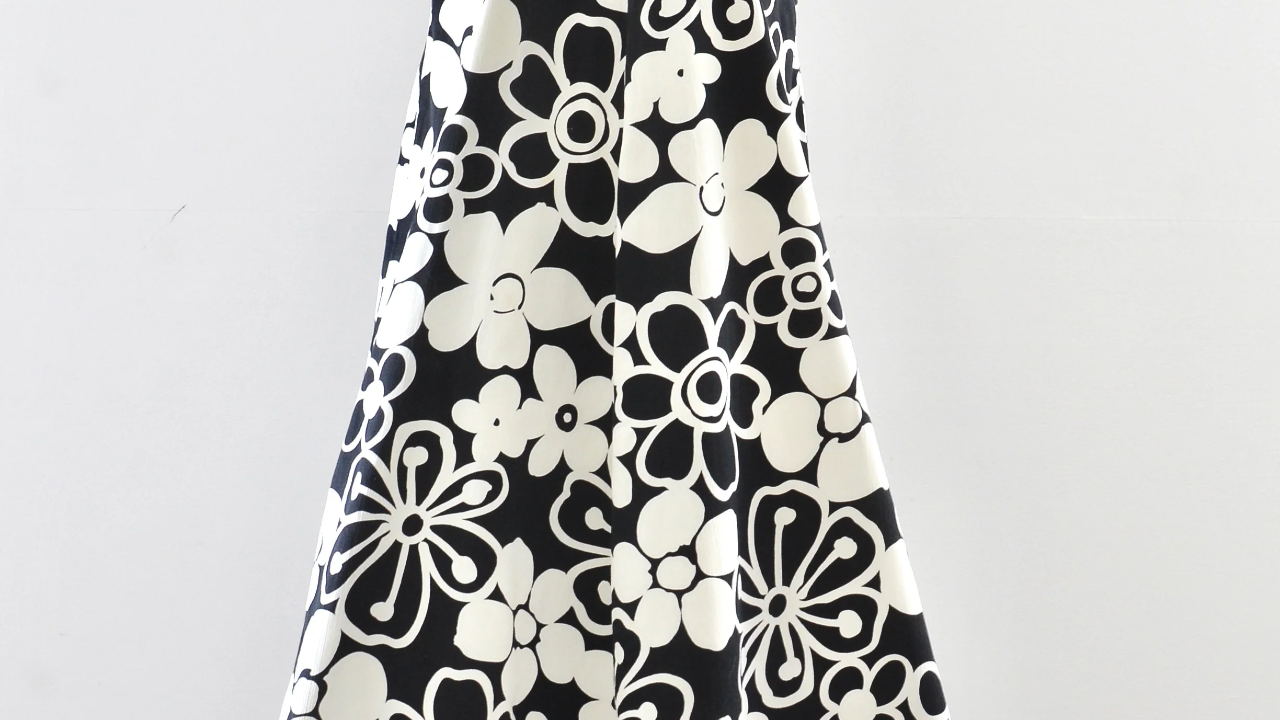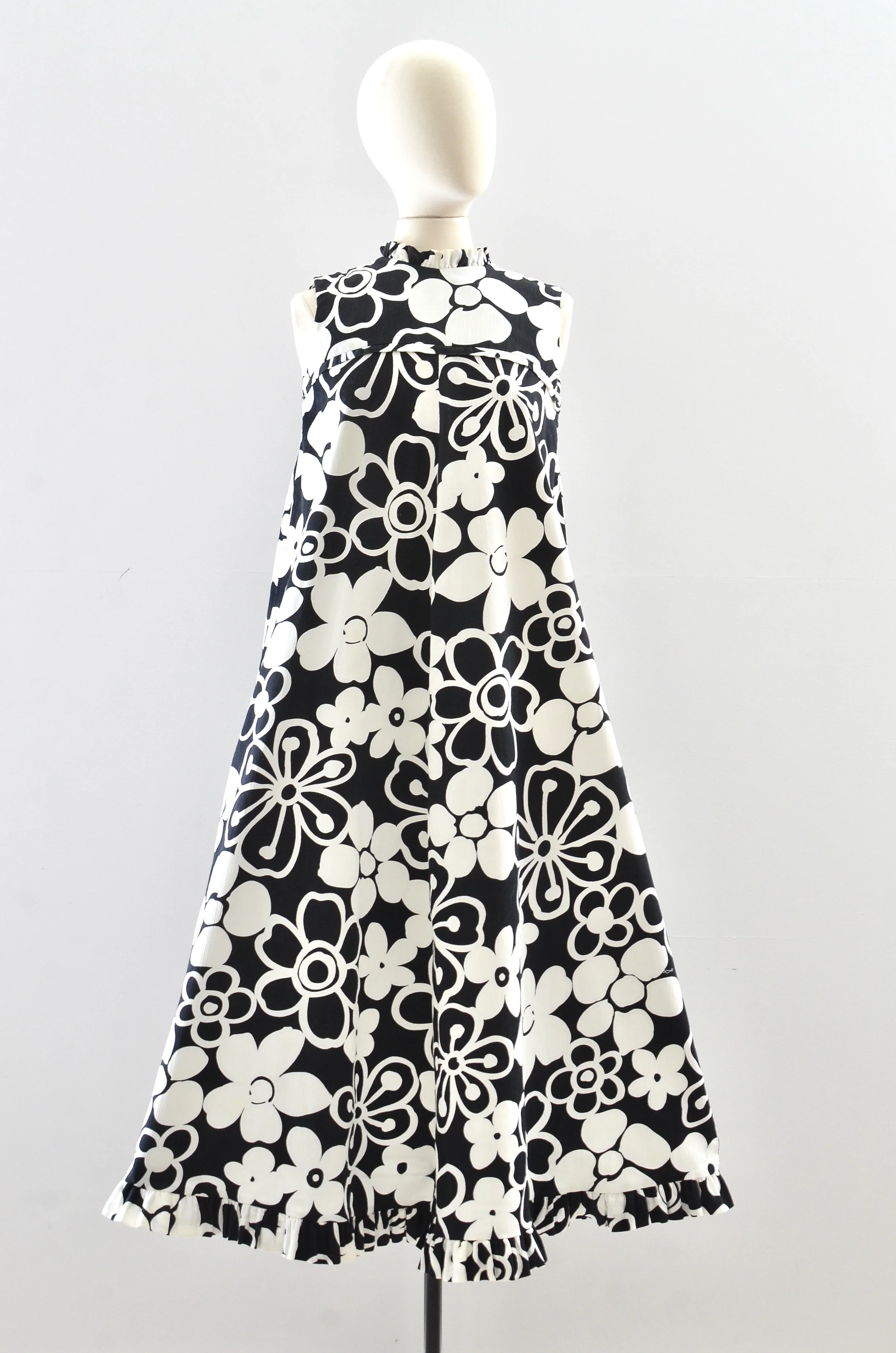AllVintageStyles
Vintage fashion encyclopedia
Tent Dress


A 1960s tent dress is a loose-fitting A-line dress that falls straight from the shoulders or bust without defining the waist, representing the decade's liberation from structured feminine silhouettes and embrace of comfortable, youthful fashion.
Quick Facts
- Era: 1960s (peak popularity 1965-1968)
- Origin: London/United States (mod movement and youth fashion revolution)
- Garment Type: Loose-fitting A-line dress without waist definition
- Key Identifiers: Unstructured silhouette, falls from shoulders, no waist emphasis, often mini length
- Typical Resale Price: $50-$200 (authentic vintage pieces)
- Best For: Mod enthusiasts, comfort-focused vintage styling, and 1960s fashion collectors
History & Evolution
The tent dress emerged in the mid-1960s as part of the mod movement's rejection of 1950s structured feminine silhouettes, offering women unprecedented comfort and freedom of movement. Designers like Mary Quant pioneered the style as part of the broader youth fashion revolution that prioritized ease and modernity over traditional feminine curves and restrictive undergarments.
The dress gained popularity among young women who embraced the decade's emphasis on youth culture and casual elegance, worn by models like Twiggy who embodied the era's thin, boyish ideal. The loose construction eliminated the need for girdles, structured bras, or petticoats, making it practical for active lifestyles while maintaining sophisticated styling appropriate for both casual and semi-formal occasions.
By the late 1960s, the tent dress had evolved beyond its mod origins to become mainstream fashion worn across age groups, particularly popular among expectant mothers who appreciated its accommodating silhouette. The style's influence extended into the 1970s bohemian movement, establishing loose, unstructured dresses as permanent alternatives to fitted fashion. Today, authentic 1960s tent dresses are prized for their comfort and representation of the decade's fashion liberation.
Authentication Tips
Authentic 1960s Features:
- Loose, unstructured construction with minimal darts or shaping details
- Period-appropriate fabrics like wool, cotton, or early synthetic blends
- Above-knee or mini length consistent with 1960s youth fashion
- Simple construction emphasizing comfort and ease of movement
- Vintage labels from mod-era designers or quality department stores
Common Reproductions/Modern Pieces:
- Contemporary stretch fabrics that add body-consciousness foreign to original aesthetic
- Modern maternity-specific construction not found in original tent dresses
- Midi or maxi lengths that contradict authentic 1960s mini proportions
- Added waist definition or shaping that defeats the tent dress concept
- Poor quality construction lacking the substantial feel of vintage garments
Styling & Use Cases
- Best for mod enthusiasts: Pair with go-go boots, bold tights, and geometric accessories for authentic 1960s London styling
- Ideal for comfort-focused vintage: Style with flats and simple jewelry for effortless retro casual wear
- Perfect for layering: Wear over turtlenecks or fitted tops for contemporary vintage-inspired looks
Modern styling tips:
- Add contemporary belts at natural waist to create shape while maintaining the dress's loose comfort
- Layer over fitted long-sleeve shirts for updated casual vintage styling with modern proportions
- Pair with ankle boots or contemporary footwear for comfortable everyday vintage-inspired wearing
FAQ
Q: How can I tell if a tent dress is authentic 1960s vintage?
A: Look for loose, unstructured construction without waist definition, period-appropriate fabrics, above-knee length, simple construction emphasizing comfort, and vintage designer labels. Authentic pieces show the revolutionary comfort-focused design of 1960s youth fashion.
Q: What's the typical price range for vintage 1960s tent dresses?
A: Authentic vintage tent dresses range from $50-$200 depending on designer, fabric quality, and condition. Pieces by notable 1960s designers or with exceptional mod-era details command higher prices among collectors.
Q: How should I care for a vintage 1960s tent dress?
A: Check fabric content and care accordingly - many 1960s pieces can be gently machine washed, while wool or delicate fabrics should be dry cleaned. Store hanging to maintain the loose silhouette and prevent wrinkles.
Q: What makes 1960s tent dresses valuable to collectors?
A: Their representation of 1960s fashion liberation and youth culture revolution, comfort-focused design that challenged traditional feminine silhouettes, association with mod fashion and women's liberation from restrictive clothing, and embodiment of the decade's embrace of casual elegance and practical fashion.
📷: Pickled Vintage
